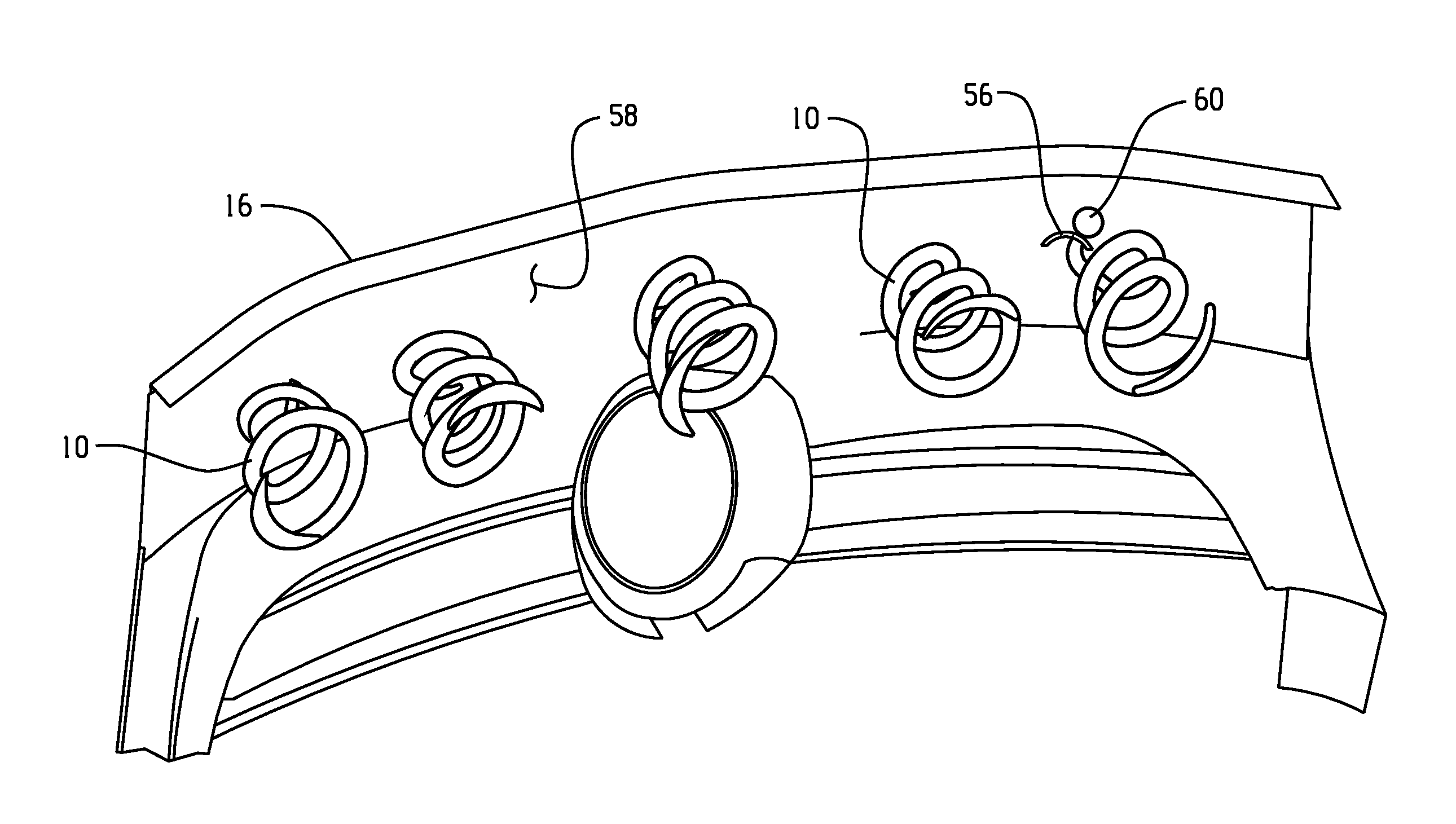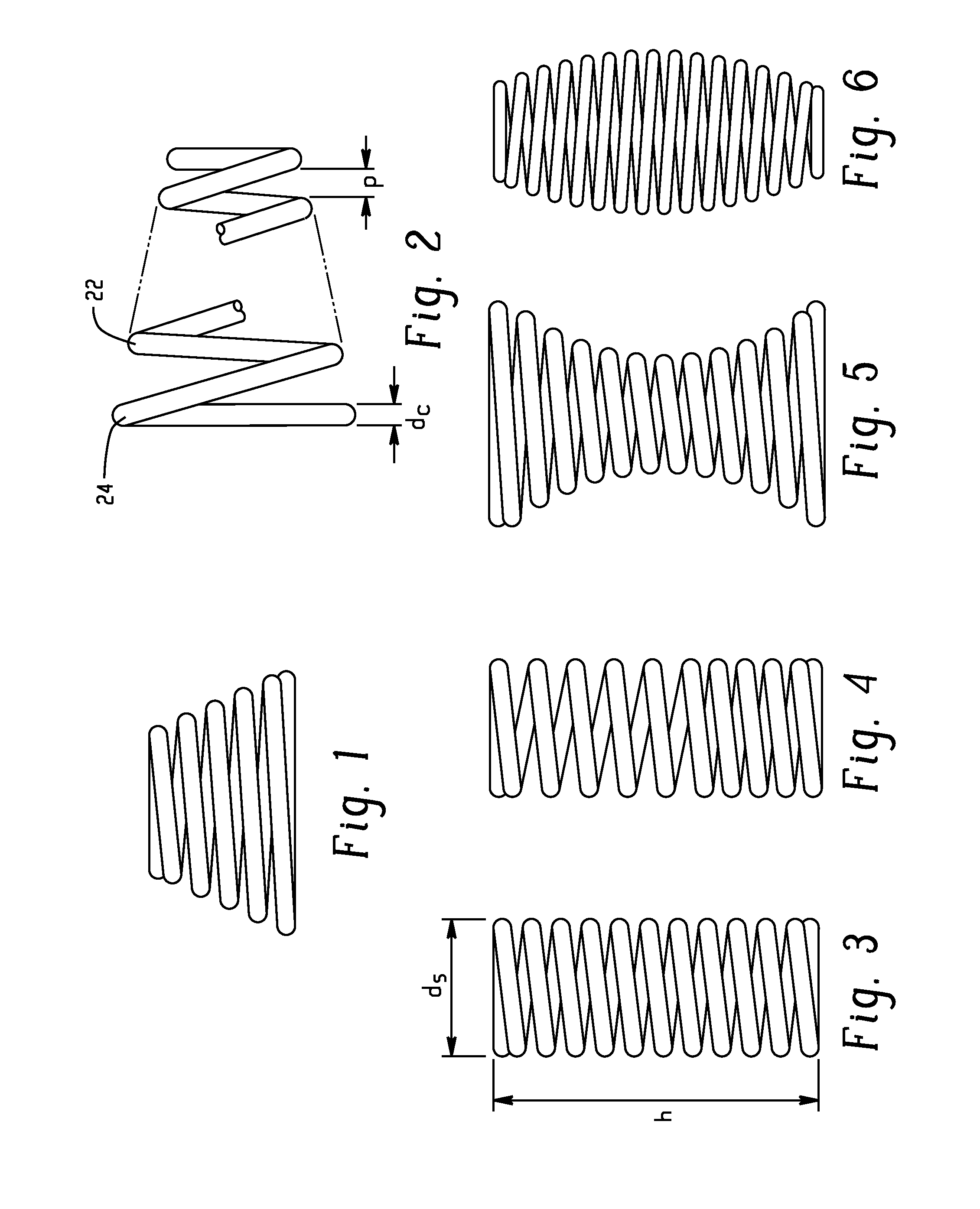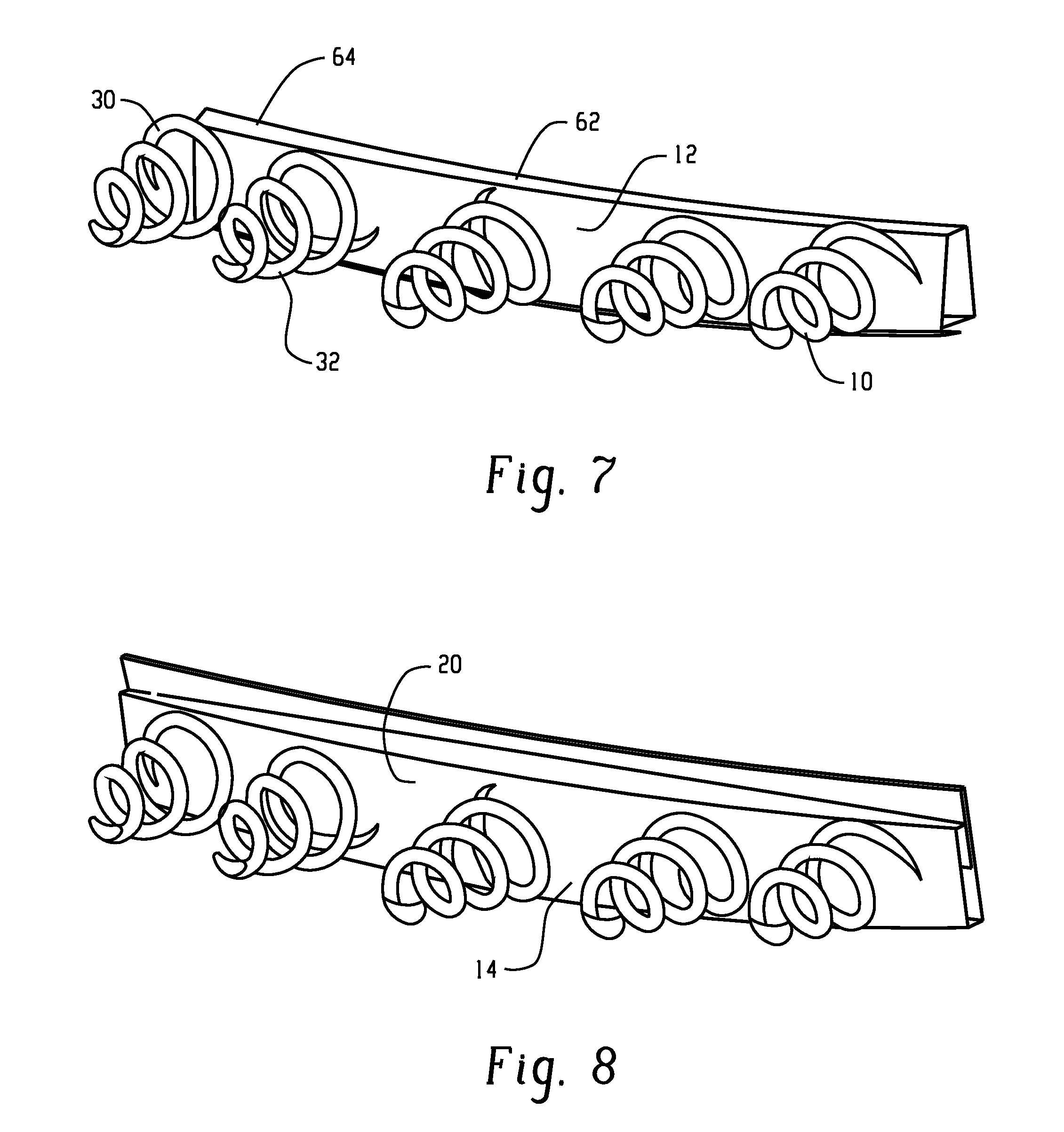Plastically deformable coil energy absorber systems
a technology of energy absorber and coil, which is applied in the direction of elastic dampers, bumpers, vehicular safety arrangments, etc., can solve the problems of high displacement, inability to fully absorb energy, so as to reduce or simplify vehicle repairs, the effect of mass reduction
- Summary
- Abstract
- Description
- Claims
- Application Information
AI Technical Summary
Problems solved by technology
Method used
Image
Examples
example 1
[0069]Example 1 is an energy absorber design comprising conical, helical, plastic springs disposed across a steel bumper beam as illustrated in FIG. 7. The springs had a diameter at their base of 80 mm, a diameter at the top of 25 mm, a coil diameter of 15 mm, and a depth (e.g., height from the base to the top) of 80 mm. The springs were formed from a blend of polycarbonate and polybutylene terephthalate (e.g., XENOY® commercially available from SABIC Innovative Plastics).
TABLE 1G-Rota-Max.BendingExam-ImpactMassloadtionSheerForceMovementples(at Y = 0)(kg)(g)(deg.)(mm)(kN)(N · m)Comp.Lower Leg2.0110.62.24.8——Ex. 1Ex. 1Lower Leg1.594.81.7——Comp.Upper Leg2.0———6.84333.9Ex. 1Ex. 1Upper Leg1.5———4.87268.2
[0070]The results comparing the thermoplastic energy absorber (Comp. Ex. 1) to the plastic spring design (Ex. 1) are set forth in Table 1. As is clear from Table 1, the use of the helical spring enabled, for the upper leg, a reduction in bending movement of greater than 50 Newton-meters ...
example 2
[0072]Prototype samples were prepared to validate the CAE studies. From these prototypes, component level tests were conducted. Commercially available polypropylene material was used to develop prototype samples. The polypropylene rods were heated below the melt temperature, and winded over a wooden mandrel manually to form helical conical coils. A compression test was performed in a Universal testing Machine (UTM) and a force versus deformation curve was compared with the CAE studies of compression phenomenon in Example 1 and Comparative Example 1 utilizing the same parameters. FIG. 15 displays a descent correlation between the CAE examples, line 92 (Comparative Example 1 and Example 1) and Example 2, line 90. A simple compression test was performed for developed coils using a UTM. One end of the coil was fixed with the help of jaws, and the coil was compress at the free end by a steel plate moving with a speed of 6 millimeters per minute (mm / min.). The same test procedure was repl...
PUM
 Login to View More
Login to View More Abstract
Description
Claims
Application Information
 Login to View More
Login to View More - R&D
- Intellectual Property
- Life Sciences
- Materials
- Tech Scout
- Unparalleled Data Quality
- Higher Quality Content
- 60% Fewer Hallucinations
Browse by: Latest US Patents, China's latest patents, Technical Efficacy Thesaurus, Application Domain, Technology Topic, Popular Technical Reports.
© 2025 PatSnap. All rights reserved.Legal|Privacy policy|Modern Slavery Act Transparency Statement|Sitemap|About US| Contact US: help@patsnap.com



